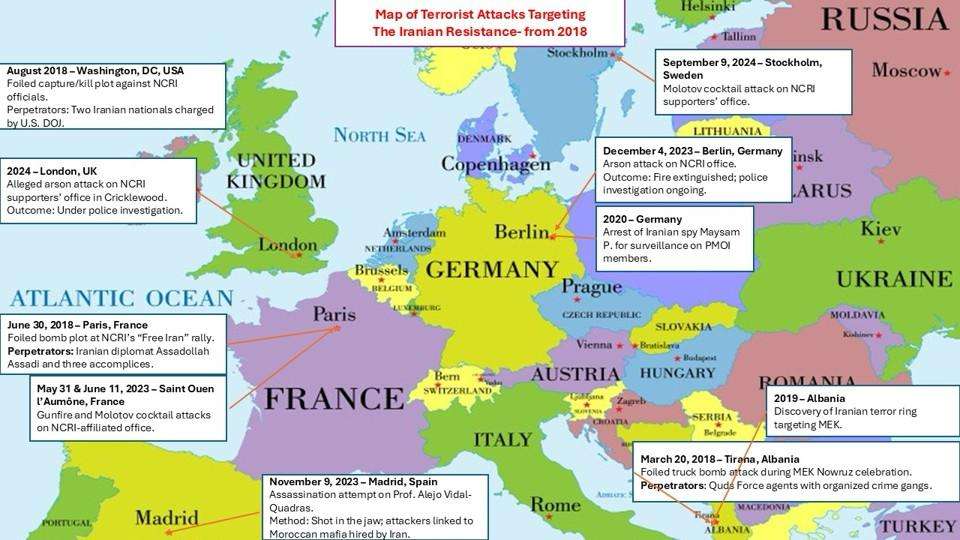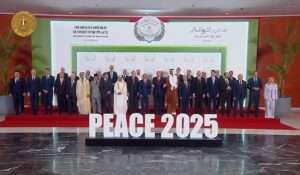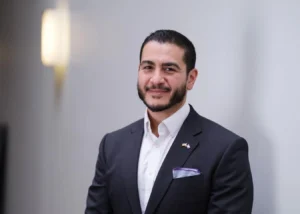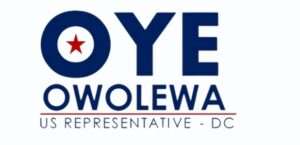By Ernest Francis
When one hears of the Islamic Republic of Iran (“IRI”) what comes immediately to mind
is the phrase “state sponsor of terrorism”, which those who pay even fleeting attention to the
news have heard many times. At a press conference on August 7, the National Council for the
Resistance in Iran (“NCRI”), through its spokesperson Alireza Jafarzadeh, provided considerable
detail on how the terrorist operations of the IRI actually function. What the press conference
showed was that the world’s identification of IRI with terror fits that regime like a glove – on a
blood stained hand.
The IRI has been extremely aggressive in the terrorist activities it has pursued. The press
conference began with a map showing the many instances in which the Iranian government has
perpetrated or attempted to accomplish terrorist acts in Europe and America. A joint statement
by the United States and Fourteen other countries on July 31 signaled that those countries must
be alert to further IRI terrorist efforts.
PERSONNEL AND STRUCTURE OF IRI TERRORISM OPERATIONS.
The IRI terrorist actions are rightly characterized as coming from the “head of the snake.”
Iran’s Supreme Leader, the Ayatollah Ali Khamenei approves all terrorist activity connected to
the regime. Without his approval, no terrorist operation is undertaken.
This has been his practice for many years – even before he became the Supreme Leader.
At one time he was overseeing Hezbollah as well as the Iraqi militias. The late Hassan Nasrallah,
then the leader of Hezbollah, suggested that he delegate some authority concerning terrorist
operations. In response Khamenei refused and emphasized that he was in charge.
While Khamenei controls operations of the IRI terrorist enterprise, he has a number of
subordinates who assist him. The President of Iran (currently Masoud Pezeshkian) presides over
Iran’s Supreme National Security Council. Ali Ashgar Mir Hejazi is the Deputy of Political and
Security Affairs of the Supreme Leader’s Office. He has the nickname of Khamenei’s enforcer.
Esmail Khatib heads Iran’s Ministry of Intelligence and Security (“MOIS”). Esmail Qaani leads
the Iranian Revolutionary Guard Corps (“IRGC”). Finally, Majid Khademi leads the IRGC
intelligence organization.
The MOIS is the arm of the Iranian government most directly involved in terrorist
activities. In the past very little information has been available concerning the MOIS. As a result
of information gathered from sources (previously shown to be reliable) of the NCRI inside Iran
as well as a document of the MOIS obtained from those sources, however, the NCRI now knows
who the operatives are at the MOIS. While the
MOIS has a large staff, two individuals in
particular are critical to the terrorist activities on behalf of the regime.
The first is Seyyed Yahya Hosseiny Panjaki (a/k/a Sayyed Yahya Hamdi). His position is
that of an MOIS deputy and head of the misnamed counterterrorism directorate. Contrary to his
title, his function is to facilitate terrorism not prevent it.
Panjaki coordinates the activities of the MOIS, IRGC intelligence operations, MOIS, and
unit 840 of the IRGC Quds force. Through unit 840 of the Quds force he can access criminal
organizations to assist him in his schemes for terrorist actions. Unit 840 has connections with a
number of criminal organizations. One is a Moroccan criminals network known as the MocroMafia. Hezbollah, an Iranian client organization, is also involved in drug trafficking and has a
stable of criminal figures it employs. The criminal network of Naji Sharafi Zindashti (discussed
below) extends over several continents.
The second critical figure in terrorist sponsorship is cleric Hossein Safdari. His position
is that of head of the MOIS Foreign Intelligence Operations Organization. He facilitates the use
of Iranian foreign embassies (and especially the intelligence stations therein) to conduct terrorist
activities.
The Ministry of Foreign Affairs is an accomplice in the terrorist missions that originate in
MOIS. It provides actual intelligence to MOIS and, using hostages in Iran as leverage, negotiates
for the return to Iran of those caught in terrorist activity.
The close connection between the Ministry of Foreign Affairs and terrorist activities is
reflected in the participation in high level negotiations of those involved in terrorist undertakings.
Gholamhossein Mohammadnia, expelled from Albania for involvement in a terrorist plan there
in 2018, was at the head of the table for the JCPOA talks in 2015 regarding Iran’s efforts to
obtain a nuclear weapon. Similarly, Reza Amiri Moghaddam, who directed the Paris bombing
attempt in 2018, was at talks in 2007 designed to insure the security of Americans then in Iraq.
TERRORIST ACTIVITY IN EUROPE IN THREE CASE STUDIES AND
IRI ACTIVITY IN THE UNITED STATES.
The regime has three ways in which it undertakes terrorist activities. It can (1) use it own
agencies and embassies entirely without the participation of anyone outside the regime; (2) rely
entirely on foreign mercenaries; or (3) a hybrid of actions by government personnel and foreign
mercenaries. The three case studies that follow present some recurring themes, which suggest
future action necessary to prevent terrorism by Iran.
The first type of terrorist operation was the attempted bombing of the 1000 Ashraf “Free
Iran World Summit”organized by the NCRI near Paris and scheduled to start on June 30, 2018.
The theme of the summit was the objective of having 1000 cells of the Iranian resistance inside
Iran. This was a gathering of 100,000 people together with foreign dignitaries and NCRI
leadership, with an address by Maryam Rajavi, leader of NCRI, scheduled for the event. In
2017, Ali Khamenei accused the NCRI of inciting the uprisings that had occurred in Iran and
stated it would pay a price.
Assadollah Assadi, who was the station chief for the MOIS network in Europe, held the
position of third secretary at the Iranian Embassy in Vienna. At the same time he was employed
by the MOIS to direct terrorist operations in Europe. At his trial, the evidence showed he
provided the explosive device to be used in the bombing to the operatives who were to place it
where it was to explode. The explosive device was transmitted to him by diplomatic pouch.
Assadi and the other operatives were arrested July 1, 2018 – hours before they would have
carried out the bombing. That prevented the planned terrorist action, but the timing of the arrests
was far too close for comfort.
In 2021, Assadi and the three other operatives were convicted of terrorism in a Belgian
court, and he was sentenced to 20 years imprisonment. The Iranian government later secured his
release in exchange for its release of a Belgian citizen Belgian, Olivier Vandecasteele, who was
arrested in Iran in 2022, charged with, among other offenses, spying, and sentenced to 40 years in
prison. Basically, the regime kidnaped a foreign citizen to use as leverage for the release of
Assadi.
Asssadi received his orders for the bombing through the chain of command from Reza
Amiri Moghaddam, who was the head of the “Foreign Security and Movements Organization” at
MOIS. Reza Amiri Moghaddam is now the Iranian Ambassador to Pakistan. As of July, 2025,
he is also on the FBI’s wanted list for questioning in connection with the disappearance and
likely killing of FBI Special Agent Robert Levinson.
The second incident which illustrates how MOIS operates is the planned bombing in
Albania of a religious ceremony of the Bektashi, a Sufi group, on Nauryz in March, 2018. A
number of members of the Mujahideen-e Khalq, the People’s Mujahedin of Iran (MEK), which is
attempting to overthrow the IRI, were present at this event.
This was a hybrid operation. The Iranian agent who made arrangements in Albania for
the bombing was Alireza Naghashzadeh, who would have been operating at the direction of Reza
Amiri Moghaddam. Naghashzadeh had previously been a part of MEK but then shifted
allegiances and began working for the Quds force. He was not, however, the individual who
would have planted the explosive device. That would have been done by members of a Turkish
and Balkan criminal gang.
The effort to bomb the Nauryz event was also unsuccessful. The gang member who was
to have completed what needed to be done was arrested. After that the Iranian ambassador to
Albania, Gholamhossein Mohammadnia, was expelled and the embassy was closed. In July,
2025, the FBI listed him as wanted for questioning in connection with the disappearance of FBI
Special Agent Levinson
The final incident which illustrates how MOIS operates is the attempted assassination,
referred to as the Sunflowers case, of Alejo Vidal-Quadras in November, 2023. This operation
was entirely that of criminal mercenaries with no involvement on the ground by any IRI agent.
Vidal-Quadras was the Vice-President of the European Parliament and founded the Vox party in Spain after having been a leader of another conservative party in Catalonia. In October, 2022,
the Iranian regime included Vidal-Quadras on a list of individuals against whom it was targeting
because of sanctions by the European Union against Iran following the death of death of Mahsa
Amini while she was being held by the regime after her arrest for violating rules on female dress.
He was also blacklisted by the Iranian regime because of his support for NCRI.
On November 9, 2023, a gunman riding a motorbike shot him in the head while he was
walking on the street in Madrid. In July, 2025, the Spanish government brought charges against
eight individuals for the attempted assassination. The individuals involved were part of the
Mocro-Mafia gang. Sami Bekal Bounouare, a killer for hire, was involved in the assassination
attempt and now lives in Iran. Investigators later determined that the motorbike belonged to
Mehrez Ayari, who was born in Tunisia. In 2024, he was arrested in the Netherlands for his
involvement in an effort to execute another politically motivated assassination.
The NCRI believes that the Iranian regime – through Quds Force unit 840 – ordered a
criminal group to perform the assassination of Vidal-Quadras. No one from the regime entered
Spain to facilitate the assassination. The connection of the regime to the assassination attempt is
still being investigated by the authorities.
The United States is not immune from terrorist acts perpetrated by the IRI. The IRI has
not only explicitly advocated such acts but has undertaken concrete steps to bring them to
fruition. The United States and 14 other countries on July 31 issued a joint statement in which
they “condemn the growing number of state threats from Iranian intelligence services in our
respective territories.”
The Ayatollah Khamenei’s website has a video showing a mechanical device entering
Mar-a-lago and then directing a drone strike against Trump as he is playing golf. The video can
be found at https://www.youtube.com/watch?v=wqcrK-3207g
Other Iranian clerics have been direct and unambiguous in their calls for the assassination
of U.S. president Donald Trump. On June 29, 2025, Iran’s Grand Ayatollah Naser Makarem
Shirazi, directed Muslims in a fatwa assassinate President Trump. This demand for the
assassination of Trump was repeated in Friday prayers on July 4 by Ayatollah Ahmed Khatami.
Such prayers are carefully scripted so that they reflect the position of Khamenei. On August 1,
the Qom seminary issued a statement endorsed by 2000 clerics who called for Trump to be
killed.
Trump has not been the only American whom the IRI has sought to kill. Others targeted
include Mike Pompeo, a former secretary of state, John Bolton, the former National Security
Adviser, and Brian Hook, a former emissary to Iran.
The penetration of the IRI into the United States is shown by the arrests of those acting on
behalf of the regime. The NCRI knows first hand about those activities.
In August, 2018, two individuals, Ahmadreza Mohammadi Doostdar (an Iranian citizen)
and Majid Ghorbani (a dual Iranian-American citizen), were arrested for spying on NCRI and
MEK on behalf of the IRI. They transmitted information to the IRI so that it could develop plans
to eliminate individuals in those organizations. These individuals contemplated developing plans
for that purpose. Ghorbani traveled to Iran in the Spring of 2018 for the purpose of a weeks long
conference with the IRI about his activities. Both individuals later pled guilty and received
multiple year prison sentences.
Panjaki also initiated a conspiracy between December, 2020, and March, 2021, to murder
two Iranian dissidents in Maryland. To accomplish this objective, he utilized the criminal
network of Naji Sharafi Zindashti, who arranged with two individuals (members of the Hell’s
Angels) to actually do the killing. The purpose of the Zindashti criminal network is to eliminate
opponents of the IRI, but it is also involved in drug smuggling. The network is believed to be
connected to Quds force unit 840. The murder for hire agreement was never completed because
the gunmen never received full payment for their activities.
Zindashti and the two other individuals involved in the conspiracy were indicted in the
United States in January, 2024. Their case has not yet been tried, and may never be, because
Zindashti is in Iran, where he fled after being charged in the killing of an Iranian defector in
Turkey. The other two defendants are in Canadian prison on separate charges.
Another attempted killing in the United States at the behest of the IRI was that involving
Masih Alinejad, an Iranian American opponent of the IRI. In March, 2025, a New York jury
convicted two men of conspiring to murder Alinejad after a man with a loaded gun was arrested
near the home of Alinejad in 2023. The two men convicted were members of the “Thieves in
Law” gang, which was formed in Russia and then spread globally.
The activities of the IRI in the United States also include illegal schemes by those not
directly involved in terrorist activities. In 2020, Muzzamil Zaidi and Asim Mujtaba Naqvi were
arrested for the collection, from individuals in the United States, of money to be sent to
individuals in the IRI. Those individuals pled guilty to the charges in 2024.
Political scientist Kaveh Afrasiabi was arrested in January, 2021, immediately prior to the
inauguration of the Biden administration, for being an undeclared Iranian agent. President Biden
pardoned Afrasiabi in September, 2023.
In April, 2025, two individuals were charged with providing support to the IRI by
purchasing parts for drones and then sending those parts to Iran for the IRGC. Those defendants,
Hossein Akbari and Reza Amidi are both from Iran and sought to buy the drone parts without
disclosing the destination for those items.
Another organization whose function is to support the IRI is the National IranianAmerican Council (“NIAC”). In 2002 (during the time that Mohammadnia was at the United
Nations), Iranian born Trita Parsi, then a graduate student seeking a Ph.D. at Johns Hopkins,
started NIAC. It’s organizational documents identify it as a lobby and state that its purpose is to “to improve relations between the US and Iran and open up opportunities for trade” and give the
lobby “a human face.” The expressed intent of its founders was that it would have a
“predominantly business oriented constituency”. It is now known as the “Iran Lobby” and
primarily serves as a shill for the IRI.
Some in Congress have called for an investigation into whether NIAC is in violation of
the Foreign Agents Registration Act. In 2006 and 2007, Parsi had direct meetings with Javad
Zarif, the then United Nations ambassador, as well as Mohammadnia. Parsi allegedly arranged
meetings between Iran’s United Nations ambassador and members of Congress. Because of
restrictions on the use of a non-profit organizations funds for lobbying, NIAC might be subject to
loss of its non-profit status and penalties for false reporting.
The IRI’s “Iran Experts Initiative” (I.E.I.) was another regime effort purportedly for
public relations in the United States. It has gone far beyond public relations and has allowed the
regime to penetrate the United States government.
The regime’s plan was to put experts into think tanks where they could advocate on
behalf of the IRI. Those who were a part of the I.E.I. requested the approval of the IRI with
regard to any professional meetings they wanted to attend, they were willing to “ghost write” opeds on behalf of the IRI, and Iran’s foreign minister would review and comment upon any
proposed articles before they were submitted for publication. According to a publication of the
Hoover Institution, an I.E.I. member stated to someone in the IRI’s foreign ministry that he was
motivated to act as he did “as an Iranian, based on [his] national and patriotic duty.”
None of that would be especially troubling except that those connected with I.E.I. have
joined the United States government as purportedly shown by documents obtained by Semafor,
an online news outlet, and Iran International, a Farsi-language television channel. The most
prominent of those individuals is Robert Malley, whom the Biden administration tapped to
negotiate with the IRI for restoration of the nuclear agreement that Trump abrogated.
Ariane Tabatabai, purportedly a part of the I.E.I. according to those documents, was
employed in 2021 as part of Malley’s team to negotiate negotiating team for the renewal of the
nuclear agreement between Iran and the United States. She left the team in 2022 to become chief
of staff in the Office of Special Operations and Low Intensity Conflict, or SO/LIC, at the
Pentagon. In that position she had access to classified information. She later became Deputy
Assistant Secretary of Defense for Force Education and Training, where her access to classified
information was greatly reduced.
Significant biographical information is not known about the Iranian born Tabatabai.
Whether she disclosed her involvement with I.E.I. prior to her employment with the United
States government is not known. During the Biden administration, the Department of Defense
purportedly undertook a review of her top secret security clearance and allowed her to retain it.
The Department stated at that time that “Dr. Tabatabai was thoroughly and properly vetted” prior
to her employment by the Department. Whether the Trump administration has subsequently
reviewed that decision is not known.
PROTECTIVE MEASURES AGAINST IRANIAN
GOVERNMENT SPONSORED TERRORISM.
The Iranian regime is likely to continue and expand terrorist operations as a way of
demonstrating its vitality as its hold on power in Iran is challenged. It has lost support in some of
the smaller cities in Iran, which have seen uprisings against it. Its significant supporters outside
Iran – Assad in Syria as well as the Houthis, Hezbollah, and Hamas – have been degraded if not
neutralized. It faces the rise of an organized resistance in the MEK, which is growing. Based
upon the experiences in Europe and America with terrorism directed by the IRI, some measures
to neutralize the threat from terrorist activities are necessary.
First, all IRI embassies, diplomatic missions, and all affiliated cultural and religious
agencies must be closed. The IRI has shown no hesitation in using its embassies to execute its
terrorist plans, and hiding such activities behind diplomatic immunity. Until the IRI stops that
abuse of diplomatic missions, it is not entitled to the benefits of diplomatic relations.
Second, the IRGC must be designated as a terrorist organization in the European Union.
The EU has already applied the terrorist designation to parts (directorates) of MOIS.
Third, agents of MOIS and IRGC as well as their unofficial lobbyists and those who
support the IRI must be prosecuted, punished, and/or expelled to the extent allowed by law.
Laws on lobbying and tax exemption need to be strictly and vigorously enforced against these
individuals.
Fourth, Iran must be held accountable for its actions that facilitate terrorism. The usual
way that the IRI avoids responsibility is to take hostages and then seek concessions (such as the
release of the perpetrators of terrorist acts) for release of the hostages. The message that such
concessions sends to Iran is that terrorism is beneficial for it.
Finally, the United Nations must impose sanctions on Iran’s Supreme Leader Ali
Khamenei personally.















